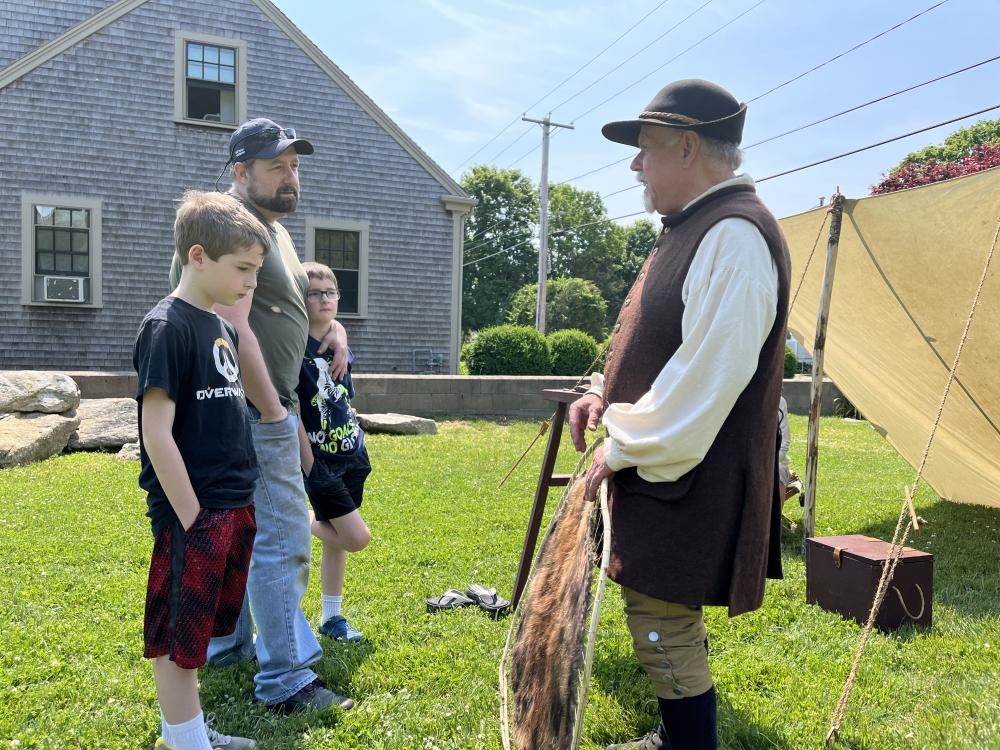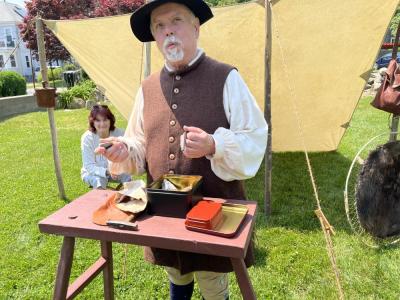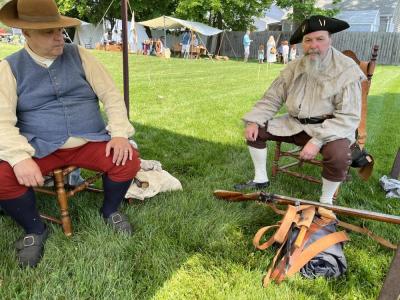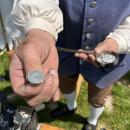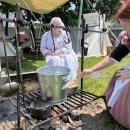Learning 18th century trades at the Akin House
The Dartmouth Heritage Preservation Trust hosted its third-annual “Never Idle Hands” event at the Elihu Akin House on Sunday, June 11.
The event held true to its name: in the Sunday afternoon heat, demonstrators toiled away at their respective crafts, from 18th century cooking, to chair making to flintknapping.
“I think [the demonstration] connects people to their own humanity in a way,” said Michael Dyer, curator of maritime history at the New Bedford Whaling Museum. “Human history is real and it matters. Our lives are not like this — our lives used to be like this.”
Demonstrators educated attendees on the activities, chores, fashion and weaponry of the Revolutionary era. Some played specific characters, such as Major General Charles Grey, a British general that raided the South Coast in September 1778, while others played ordinary people working on their craft.
Dyer was hard at work building a traditional ladderback chair, “the simplest way there is of building a chair,” he said.
To craft the chair, he used a froe, an 18th century tool which allows him to carefully split logs without weakening it, as saws or an axe would.
Another group of demonstrators showed how colonists in the 1700s would have cooked. Bernie and John Taber, along with Leah Cairrao, participated in reenactments for 20 years, but are now the founding members of their group Sea to Tea, which focuses specifically on early American cooking demonstrations. Everything the trio cooks is both true to the period and seasonal.
“Most of what you see [about the 18th century] never goes into what the people ate,” Bernie said. “That was taken for granted, perhaps.”
Gary Franklin and his son Jay, who have been reenacting since 2014 as part of the Wareham Minutemen and Militia, showed how militia members would smelt their own musket balls and buttons. To do so, they used special molds that could be placed directly in a fire.
Brian Santos, from Northeast Mountain Men, demonstrated how trappers would dry beaver pelts for hats, and the various uses of flint.
The Akin House was also on display Sunday, as it’s one of the oldest buildings in Dartmouth, built in 1762.
President of the Trust Diane Gilbert said many of the older houses in Dartmouth are far off the beaten path, or have been renovated to the degree that it’s no longer the same house. The Akin House, by contrast, has never been altered and sits right on Dartmouth Street.
“We want to educate people that this 1762 house exists,” Gilbert said. “It’s a witness site to the revolution.”



